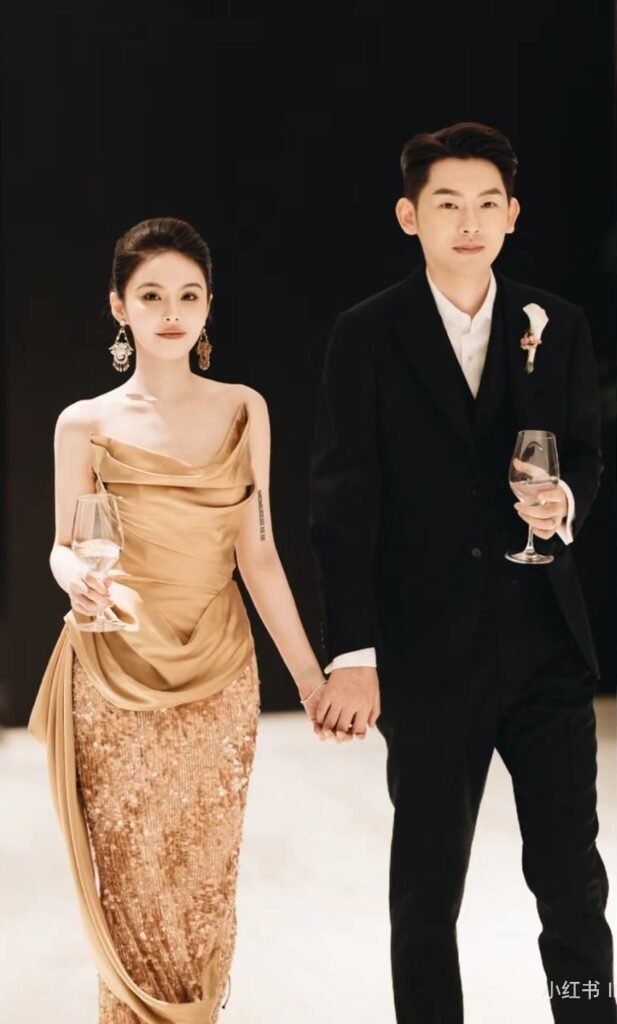
This photo shows two Chinese celebrities wearing Chinese-style wedding dresses.
In a modern Chinese wedding, the bride typically selects multiple outfits, each designed for various moments and moods throughout the day. From the early morning preparations to the final toasts, the choice of attire is crucial for expressing different styles and emotions. Let’s explore the four key pieces: the Morning Robe, Qun Kwa (a traditional Chinese dress), Wedding Gown, and Reception Dress, along with the best times to wear each of them.
1. Morning Robe
When to wear: Early morning, during the bridal preparation.
Where to wear: In the bride’s room or dressing area.
Occasion & Purpose: The morning robe is a comfortable and elegant piece for the bride to wear while she’s getting ready, such as during makeup and hairstyling. Designed for easy wear, the robe makes it simple to switch into more formal attire later. Additionally, it adds a touch of elegance to preparation photos, especially with bridesmaids. It’s both practical and graceful, helping the bride stay relaxed and beautiful throughout her morning routine.


2. Qun Kwa
When to wear: During the “door games” or before the formal ceremony; also commonly worn during the reception for toasting.
Where to wear: At the bride’s home or reception venue.
Occasion & Purpose: The Qun Kwa, a traditional Chinese dress, reflects Chinese cultural heritage and symbolizes luck and prosperity. Adorned with intricate embroidery in bright red, it’s often worn during the groom’s arrival for the “door games,” where he “wins” his bride by passing fun challenges. The Qun Kwa can also be worn during the reception for toasting, allowing the bride to showcase a new look with a touch of tradition, making it an ideal choice for adding cultural charm to the wedding.
3. Wedding Gown
When to wear: At the start of the formal wedding ceremony.
Where to wear: The main ceremony venue, whether a chapel, ballroom, or outdoor setting.
Occasion & Purpose: The wedding gown is the centerpiece of the bride’s attire, representing the elegance and beauty of the ceremony. A classic white or ivory gown symbolizes purity and romance and is the highlight of the wedding. There are various styles to suit each bride’s personality and theme—long train gowns add a royal touch for grand ceremonies, mermaid silhouettes enhance elegance, and princess styles bring a fairytale feel. The gown allows the bride to shine in her own unique way during the most significant part of the day.


4. Reception Dress
When to wear: After the ceremony, during the banquet and toasting session.
Where to wear: The wedding banquet venue.
Occasion & Purpose: The toasting portion is an important part of the reception, with the bride moving from table to table to thank guests. For this, the bride usually changes into a reception dress, which is more comfortable and practical than the formal gown. Common choices include a Qipao (Chinese-style dress), a stylish evening gown, or a cocktail dress, allowing the bride to interact with guests effortlessly. Reception dresses come in a variety of styles, with red for a traditional touch or soft pink or champagne tones for a graceful, welcoming look.
If you love Chinese-style wedding dresses, you can find them at Ssayara. We have a Dragon and Phoenix Qun Kwa gown that will be perfect for you.